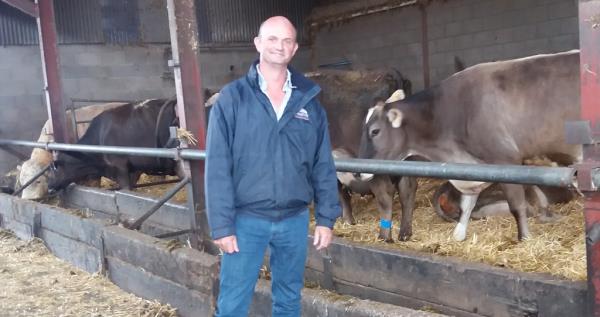It didn’t start well as I hadn't realised quite how pedantic an airline could be but 6.01am was too late to get the 6.40am flight from Liverpool. Given the Irish reputation for craic and chatter Belfast international airport was a surprising 40 minute silent taxi journey to the conference centre.
Political and Industry Leaders:
The initials sessions were excellent. Michael Gove was on great form extolling the virtues of innovation in dairy and technology to help us cope with a reduced access to EU migrant labour and hinted that perhaps a seasonal non-EU labour scheme might develop. He painted a vision of how we might work with our European partners, a relationship which Phil Hogan described as looking very similar to what we currently have with our existing membership.
The world dairy leaders identified clearly that something is wrong in the world. We are not reducing food poverty anymore. Obesity is increasing at the same time as malnutrition and there are more people to feed. There are 7 billion people on the planet and 2 billion don’t have adequate nutrition. Out of 5 billion adults in the world 2 billion are obese and 1 in 12 has type 2 diabetes. They identified the need for the sector to find new vigour to push the benefits of dairy in consumer diets and to address the mistruths and myths that vegan campaigns use to knock our products.
Trade and Volatility:
The sessions on global trade were most interesting. The New Zealand trade negotiator painted a really great picture of a country with a tremendous history and clear strategy to reduce trade tariffs through trade agreements with local partners around the Pacific. The American position was somewhat in contrast as they are seemingly heading towards a more isolationist position or at very least going through a period of considerable renegotiation. Their position was best described as having significant uncertainty but with most global growth which drives demand being outside the US it seems certain that their current position will have to change.
After the Uruguay round of WTO talks the dairy industry has seen increased volatility. There seems to be almost a 3 year cycle to the volatility pattern but the volatility was shown to be very much a function of both the product and the market conditions in any given country. To a large extent it is farmers that have been left to carry volatility risks as national governments find it hard to regulate market conditions if the pressures are international. The best way to manage volatility is to be good at what you’re doing; this chimes in well with the latest AHDB Brexit report which concludes that the best performers will prosper however the final shape of any trade agreement looks.
Antibiotics:
Perhaps the most insightful sessions for me were the ones on antibiotics and animal health. A number of strategies from vets from different countries are being adopted to try and promote cow health and reduce the need for therapeutics. There is a drive for improved standards, described by Red Tractor and Dean Foods in the US, to demonstrate best practice to consumers who care increasingly about provenance. The need for farm assurance and the optimisation of herd health was highlighted.
The fact that no new antibiotic classes have been developed since 1985 was a significant cause for concern. We have no new tools available and increasing numbers of resistant bacteria. The rise in resistance could pose a catastrophic threat to society in just a couple decades and routine operations might become deadly risks.
It costs £250 million to develop a new antibiotic but as any new antibiotics would be saved as a last line of defence it’s hard for any pharmaceutical company to invest in a product that wouldn’t be used. A company would be better developing a product for hypertension which they can sell to customers every day of the year. The development of new antimicrobials may be incentivised using novel global approaches such as extending the patent of a drug company’s product portfolio to provide the economic incentive to invest. In the mean time we must do what we can to 'use the right drug in the right amount by the right route for the right time period’.
In all it was an interesting conference with great hospitality and some great presentations - too numerous to describe in great detail. Perhaps the last take home message was that the biggest change in animal disease levels in the next 10 years will probably be driven by social science rather than therapeutics. I’m rather hoping that this is true for the control of bovine TB.
